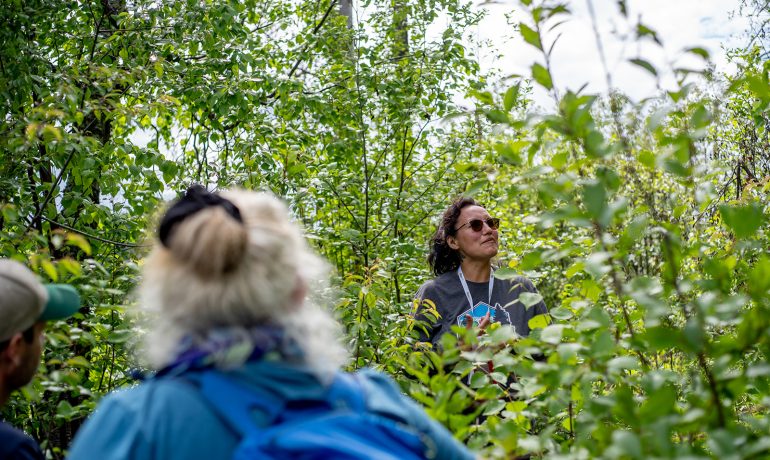The Valley Voice
March 22, 2018
by Art Joyce
Slocan Integral Forestry Co-op (SIFCo) will carry out a controlled burn this April on a steep slope about 1.5 kilometres from Winlaw’s centre. The exact date of the burn will be posted on SIFCo website at www. sifco.ca as soon as it is confirmed. At a public presentation in Winlaw Hall, March 14, attended by about 30 people, SIFCo manager Stephan Martineau and forestry supervisor Tom Bradley used current forestry science, wildfire computer modeling projections, and a video to explain the rationale for the burn. Jonathan Fox and Sean Phelps of the BC Wildfire Service answered audience questions.
Basic thinning and ground preparation in the 60-hectare block has been done and was partly paid for by an $80,000 grant from the Forest Enhancement Society of BC. A ground crew of 15-20 will work using drip torches on the ground, and a helicopter will drop ignition spheres into the burn zone. The existing forest service road will provide one natural boundary, with Winlaw Creek providing the southern boundary, and either end as well as the top of the block will be scorched to ‘bookend’ the burn zone.
The closest residential property is about 50 metres from the western boundary of the burn zone and there will be a sprinkler line set up nearby. Crews start at the top of the hill and work down, in reverse of a fire’s natural tendency to start low and accelerate as it gains altitude, eventually increasing to a crown fire. The burn time will be about three hours, with flames expected to be out by evening.
Forestry management has undergone a major change in thinking and practice, breaking with the past 100-year tradition of wildfire SIFCo to carry out controlled burn near Winlaw suppression. The video featured various forestry experts explaining that, prior to modern forestry, forests were naturally thinned by wildfires. Indigenous peoples frequently used controlled burns to increase grazing for deer, elk and bison. Modern firefighting was prompted by the ‘big burn’ of 1910, which consumed millions of acres from eastern Washington to western Montana, killing 87 people and destroying several towns.
The unfortunate result of intensive firefighting has been a huge increase in fuel from both deadfall and ingrowth. Photos showed healthy forests prior to 1910 with substantial spacing between trees, creating a ‘patchwork’ effect that acted as natural fire breaks. Complicating the problem is climate change. Martineau showed several graphs of computer models for the Columbia Basin predicting a continuing trend of hotter, drier summers. All these factors have worked together to create the “current epidemic of trees,” more trees than the landscape can support. Dry south slopes are now covered with trees, whereas once they were patchworks. Lower snow and rainfall trends combined with hotter temperatures have increased the rate at which moisture evaporates from soil, adding to fire risk.
SIFCo began doing fire interface work in 2008 and has treated 440 hectares in the Slocan Valley since then, particularly in residential interface zones. In 2014, they began doing wildfire modeling, using a computer program known as FlamMap from the US Joint Fire Sciences Program. SIFCo then used this program to discover the main fire corridors in the valley by lighting thousands of virtual fires. For example, the model showed that a fire starting near Winlaw could be at Appledale within eight hours. SIFCo is therefore choosing the location of its controlled burns in areas that are most likely to be in the path of wildfires, including the Winlaw burn. In 2016, SIFCo released its Strategic Slocan Valley Wildfire Protection Plan that includes 12 Landscape Level Strategic Fuel Breaks. Seven of those have been started and all are expected to be completed by 2023.
Although costs are high – Martineau estimated $3 million has been spent so far in wildfire interface work in the Valley – it only takes 10% of initial costs to maintain fire breaks and interface zones. Much of these costs have been covered by grants and provincial transfers. In response to audience questions regarding prescribed burns getting out of control, Fox said this is an extremely low probability risk. All controlled burns must be done in accordance with provincial laws governing the air quality index. Wind direction and speed and cloud cover are rated to determine the best possible days for good venting. The amount of smoke generated by a controlled burn is only a small fraction of that created by out-of-control wildfire. In as little as two weeks after a burn, green grass and plants can already be seen growing.
Although SIFCo lacks the resources to do private land interface treatment, Martineau said they’re happy to visit landowners and advise a strategy. Both the Regional District and Firesmart Communities Canada have programs to assist private landowners.
Related Post
As Published in Canadian Forest Industries Magazine, Pulp & Paper Magazine and Canadian Biomass Magazine
Jennifer Gunter’s Op Ed, “Community Forests: Rooted in Community,
Minister of Forests Mandated to Expand BC’s Community Forest Program
In the recently released mandate letter to the Minister



